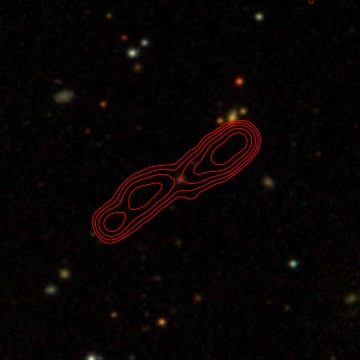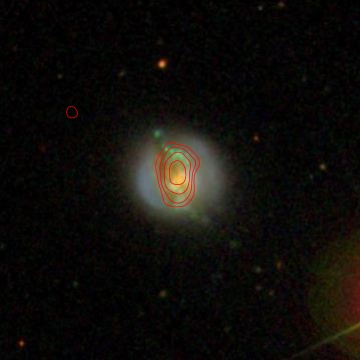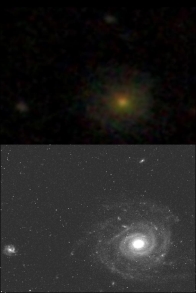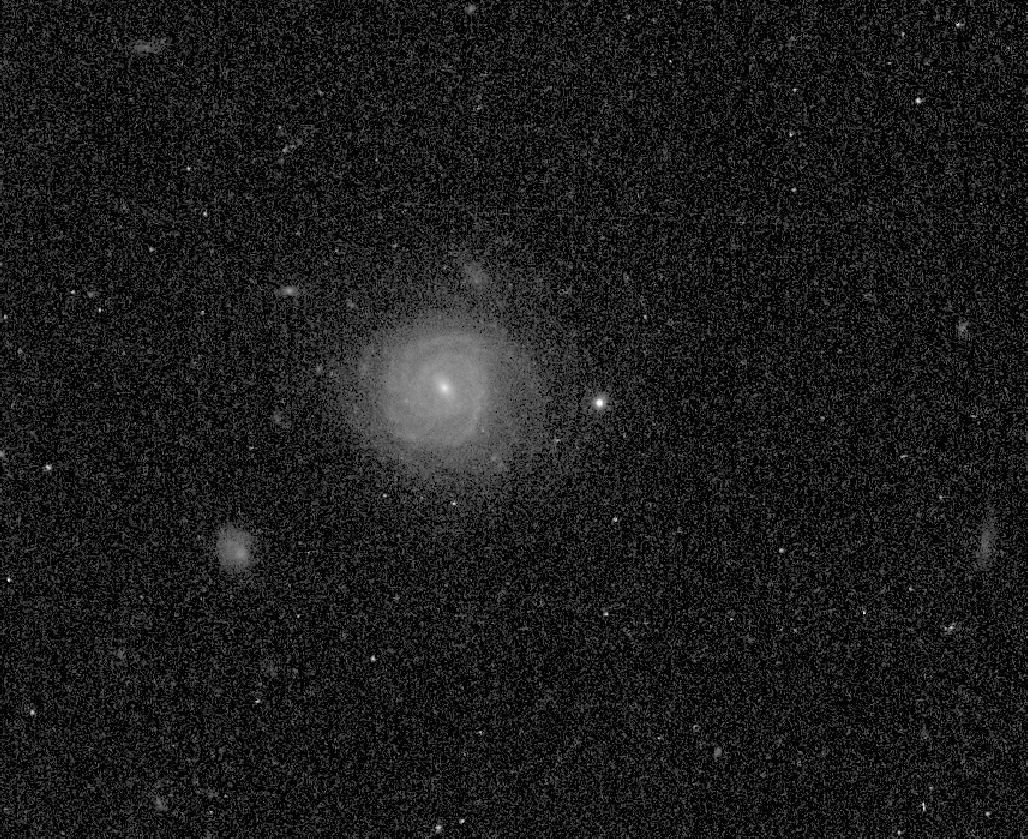Update on Potential Hubble data opportunity - help us collect the strangest objects!
-
 by
JeanTate
by
JeanTate
NGC3314 (Bill Keel) posted this, just a while ago, in GZ Talk (link to Discussion thread, sorry I can't post a link to the actual post itself):
Update - sort of. I infer that STScI is now reviewing the "gap-filler"proposals, since I received an acknowledgment email of the submission today. (We made the September 12 submission deadline...)
Posted
-
 by
JeanTate
by
JeanTate
Update: NGC3314 just posted this, over in GZ Talk:
Aaaand it's official! We get to submit 300 targets for the overall pool (this was one of three approved gap-filler proposals). I kind of suspect yesterday's email may have been sent in place of an acceptance notice, but no complaints. Next up - figure out what targets to retain, select the ACS filter for each, enter into the submission software.
I may be wrong, but I think there were many more than three proposals ...
Posted
-
 by
sisifolibre
by
sisifolibre
Cool! but t It seems that you have to make a smaller selection... can I help someway?
Thanks for the update Jean
Posted
-
 by
JeanTate
in response to sisifolibre's comment.
by
JeanTate
in response to sisifolibre's comment.
Thanks!
I myself don't know yet how the winnowing - ~1100 to 300 - will be done; once I find out, I'll certainly let you know, and suggest ways you could help. 😃
Posted
-
 by
ivywong
scientist, admin
by
ivywong
scientist, admin
Ooops, just saw this post, will link this post to the one I just sent out.
Thanks @JeanTate for keeping everyone informed. Yes, it will be tough to cull down the list 😉
Posted
-
 by
JeanTate
by
JeanTate
C'mon volunteers, what are your fave objects, ones that have come to light since ~September last year?
We have an opportunity to include them among "the 300", to be observed by the Hubble Space Telescope (well, more accurately, to be considered to be scheduled for such; if it turns out any of our candidates is already in someone else's scheduled target list, it won't get observed, for example).
Posted
-
 by
Dolorous_Edd
by
Dolorous_Edd
I am for grav lens candidates + other wierd object that were submitted with them earlier, plus ARG0003lhy field
Posted
-
 by
ChrisMolloy
in response to JeanTate's comment.
by
ChrisMolloy
in response to JeanTate's comment.
Here's two I've come across, looking back past year or so. One #green, and one possible #SDRAGN.
#green, ARG0003cm3, SDSS J145906.94+063559.8, could have a partial x-shaped lobe on one side of the emission.
possible #SDRAGN, ARG0002ff7,
SDSS J083224.82+184855.4, interesting extended emission NWIf these are already in the list then disregard.
Posted
-
In response to Jean Tate, like Dolorous Edd, I am for gravitational lens candidates + other objects that were submitted!
Looking for the weird & wonderful...Posted
-
 by
sisifolibre
by
sisifolibre
I put here and in this collection candidates that can not to be found in other collections. Some of them have interesting comments from superzooites or sciencist but seems to have been forgotten:
ARG00033m7 Seems "usual" with a quick look but I would say very curious galaxy with tentacles 😃 See discussion.
)
=======================
ARG000153g Is other of my forgotten favorites, see discussion.
=======================
ARG0001q0k Have extended emission, perhaps triple.
=======================
ARG0002i57 A #triple with curious host
=======================
ARG0000n0l Another #triple
=======================
ARG0003oq0 is a merger that seems to have multiple radio emission only in FIRST
=======================
ARG0003ohn Is only a #double but very insteresting anyway.
=======================
ARG0002frc This object haven't radio emission but still interesting IMHO, but perhaps too much small...
===========================
https://radiotalk.galaxyzoo.org/#/subjects/ARG00019mz Is an interesting host from a #double. Perhaps this two subjects are too much faint to be interesting, because most probably are just ETG with noise but I wanted to bring them here.
Similar to https://radiotalk.galaxyzoo.org/#/subjects/ARG00013lf :
======================
Following candidates seems just beautiful and curious mergers with #compact radio emission, I guess that would have lower priority
https://radiotalk.galaxyzoo.org/#/subjects/ARG0001buz.
===============================
https://radiotalk.galaxyzoo.org/#/subjects/ARG0001avx
================================
https://radiotalk.galaxyzoo.org/#/subjects/ARG0003hft
==================================
https://radiotalk.galaxyzoo.org/#/subjects/ARG0000l0g
==================
https://radiotalk.galaxyzoo.org/#/subjects/ARG0000852
Posted
-
 by
sisifolibre
by
sisifolibre
star forming filaments are so cool...
https://radiotalk.galaxyzoo.org/#/subjects/ARG0001wlu
about what kind of objects is the name SDSSCGB? I guess is related with SDSS but I can't find the meaning of CGB.
https://radiotalk.galaxyzoo.org/#/subjects/ARG00031eh
Posted
-
 by
ivywong
scientist, admin
by
ivywong
scientist, admin
One thing to note is that we will always have more cool objects to point our scopes at than time available so don't worry, we can always apply for more Hubble Time or time with other large telescopes once we have proven ourselves this round on Hubble.
Posted
-
 by
JeanTate
by
JeanTate
Gems of the Galaxy Zoos: help pick Radio Galaxy Zoo Gems! is a blog post by Ivy, announcing the launch of the website where we can vote for our choice of galaxies for the Hubble Space Telescope to observe, under the ZooGems gap-filler program.
The Radio Galaxy Zoo Gems website is here.
This follows the launch of ZOOGEMS, which is about choosing Hubble targets from Galaxy Zoo objects; details in this blog post by Bill Keel (NGC3314): Gems of the Galaxy Zoos – help pick Hubble observations!
The ZOOGEMS website is here.
Head over to both sites to vote for your favorite galaxies! 😃
Posted
-
 by
sisifolibre
by
sisifolibre
Amazing job @JeanTate and @iviwong and all the team!
I feel prood to be even a tiny part of this. I'm sure this will join more people to citizen science!
Posted
-
 by
ChrisMolloy
by
ChrisMolloy
Finished my classifications. Well done to all involved.
Posted
-
 by
JeanTate
by
JeanTate
Thanks! 😃
It was a lot of work in a very few days, but also lots of fun (creating montages was rather tedious though).
I think NGC3314 deserves the biggest credit: first, he spotted the HST gap-filler request for proposals; second, he kicked off the process of getting suggestions, for objects to observe, from zooites/volunteers; third, he pulled all those inputs together and submitted a proposal; fourth, he insisted on a mechanism by which we could vote for which objects get chosen; fifth, he used Project Builder to create the sites; sixth, he developed the ZOOGEMS site (which I used extensively as a model); ... and seventh he (together with Ivy and Julie) had sufficient confidence in my ability to make RGZooGems work according to his (their) vision.
Myself, I want to thank all those who sent me suggestions and encouragement. And I'd like to praise sisifolibre particularly, for the Tutorial text (what's on the site is little changed from his draft; I tweaked a few things, and added some images). That Tutorial has been praised by many an astronomer, including this public mention: "This project has an excellent tutorial on why and how".
Finally, none of this would have happened if there'd been no Project Builder. Earlier this morning I wrote a few words of praise, using my experience with RGZooGems to illustrate how terrific I think it is (Project Builder: what a super fantastic thing it is! Credits to ...).
Posted
-
 by
JeanTate
by
JeanTate
Two new Workflows/Subject sets now added to Radio GalaxyZooGems, SDRAGNs09 and GreenDRAGNs03. It's very likely there will be no more (though there's a possibility I'll add to the latter later). One or two of the radio contour overlays are less than ideal, so I plan to make better ones and swap out the current ones; I doubt this will make much of a difference, voting-wise, but I like to put each (candidate) host's best face forward 😉
Posted
-
 by
JeanTate
by
JeanTate
Update: I just uploaded the last Subject, the only one that's not in either SDSS or FIRST footprints (it's in the SDRAGNs09 set). I had earlier added a couple of other good SDRAGN candidates which had somehow not made it through the selection process (I intend to dig into why after voting has ended, on 17 February); thanks to Dolorous_Edd for pointing these out. Finally, a small handful of less than ideal (ha!) radio contour images were swapped out for better ones (no guarantee they're "ideal").
So, it's not too late for you to cast your votes (if you haven't already done so); and if you did so earlier, check out SDRAGNs09 again, to vote on the late additions.
Posted
-
 by
c_cld
by
c_cld
From GZF and Spacewarps there was a discussion on a candidate
"4C -00.81" i didn't find in RGZ and consequently not on GEM.
It's a pity it was lost and forgotten...
SDSS J221830.16+001221.1 1237663479259332945 z spec=0.293
4C -00.81
ra, dec 334.625667067, 0.205879141 22:18:30.16, +00:12:21.16
NVSS J221833+001152 ; FIRST J221829.9+001220 ; FIRST J221828.7+001228; FIRST J221828.3+001232
Posted
-
 by
Dolorous_Edd
by
Dolorous_Edd
Yeah, I remember it
You have posted it in RGZ green thread, and it circulated as green candidate
Far from forgotten
AND IT IS IN RGZ GEMS ; in GreenDRAGN 2 set
Posted
-
 by
c_cld
in response to Dolorous_Edd's comment.
by
c_cld
in response to Dolorous_Edd's comment.
Thank you for your quick "lost and found" recovery 😃 The forum "search" function is so bad that we have to rely on collaborative better memories.
Posted
-
 by
JeanTate
in response to c_cld's comment.
by
JeanTate
in response to c_cld's comment.
The forum "search" function is so bad that we have to rely on collaborative better memories.
Indeed. Here's hoping that Panoptes-based projects are better (they could hardly be worse!), especially their Talks ...
Posted
-
 by
JeanTate
by
JeanTate
While the site is still active - so you can still classify/vote if you wish - the classifications needed for extracting the vote tallies have been downloaded, and any further classifications will not be analyzed. Next steps are described in the Final voting information thread.
There's still work to do, however; if you'd like to contribute to the discussion on Selecting the ACS filters to use (a discussion thread in RGZG Talk), please join in.
Thanks to everyone who participated!! 😄
Update: to be consistent with ZooGems, classifying has been made inactive.
Posted
-
 by
JeanTate
by
JeanTate
With RGZG Classify now inactive (Talk is still open!), the Tutorials are no longer accessible. So I'm copying them here.
First, the GreenDRAGNs one:
-
This project involves you in an important decision about which objects the Hubble Space Telescope will spend valuable time observing. Please take a while to learn the basics, this will allow you to make a better decision. We have found lots of objects that we consider very interesting for different reasons and we want you help us to decide.
-
Most galaxies have supermassive black holes at their very center (in their nuclei); when matter (gas, dust, even stars) falls into them, they often produce back-to-back jets of plasma that interact with the galaxy and its environment. These jets are somewhat like the Large Hadron Collider, only a million million million million ... times more energetic. We can see this plasma because it strongly emits radio waves.
-
You are going to see two images in optical light; to the left the image has some contour lines that show the shape and strength of the emission in the radio part of the electromagnetic spectrum; to the right is the zoomed-in image of the galaxy, which we think is the host of this emission.
-
Green objects are interesting because they may show star formation, glowing gas powered by radiation from the active nucleus (home of the supermassive black hole), or other interesting astrophysical processes. Note that a "green" object may appear pink, red or even white in SDSS images, depending on how far away it is (this is due to redshift).
-
The (i) button gives information on the two images. Take a look at the About section, the "Help with the task?" button, and the Field Guide; we are sure that you will find these links both helpful and interesting.
-

Remember this isn't about how cool a galaxy might appear (yes, some are delightful eye-candy); rather if observed by Hubble, which galaxy hosts will benefit most from its magnificent sharp vision, to reveal what the structure of the green emission is, for example. The image above makes this point quite dramatically: not only is the most obvious galaxy a spiral (in the Hubble image, lower), so is the barely visible smudge at the lower right (in the SDSS image, upper)! If you want to see all the Green DRAGNs before voting, just explore this Collection!
Posted
-
-
 by
JeanTate
by
JeanTate
And the SDRAGNs Tutorial:
-
This project involves you in an important decision about which objects the Hubble Space Telescope will spend valuable time observing. Please take a while to learn the basics, this will allow you to make a better decision. We have found lots of objects that we consider very interesting for different reasons and we want you help us to decide.
-

Most galaxies have supermassive black holes at their very center (in their nuclei); when matter (gas, dust, even stars) falls into them, they often produce back-to-back jets of plasma that interact with the galaxy and its environment, producing sometimes quite bloated "lobes". These jets are somewhat like the Large Hadron Collider, only a million million million million ... times more energetic. We can see this plasma because it strongly emits radio waves. -
You are going to see two images in optical light; to the left the image has some contour lines that show the shape and strength of the emission in the radio part of the electromagnetic spectrum; to the right is the zoomed-in image of the galaxy, which we think is the host of this emission.
-

Spiral galaxies with extended radio emission are interesting because that radio emission may be powered by the jets; in our best current models these jets should not make it out of the galaxy. Parts of spiral galaxies which have experienced recent intense star formation are also sources of radio emission (due to the plasma clouds created by supernovae); however, these almost never extend beyond the galaxy itself, and are usually much weaker than radio emission created by AGNs (Active Galactic Nuclei, where the supermassive black holes live). -
The (i) button gives information on the two images. Take a look at the About section, the "Help with the task?" button, and the Field Guide; we are sure that you will find these links both helpful and interesting.
-

Remember this isn't about how cool a galaxy might appear (yes, some are delightful eye-candy); rather if observed by Hubble, which galaxy hosts will benefit most from its magnificent sharp vision, to reveal if it is a spiral galaxy for example. The image above makes this point quite dramatically: not only is the most obvious galaxy a spiral (in the Hubble image, lower), so is the barely visible smudge at the lower right (SDSS image, upper)!
The Medley of SDRAGN candidates Collection has a sample from the various SDRAGN sets, illustrating their range; you may find it of some help in deciding how you'll vote.
Posted
-
-
 by
JeanTate
by
JeanTate
Of the 300 "slots" in "our" Hubble gap-filler proposal^1, 103 have been filled with objects from Radio GalaxyZooGems! 😃 38 from the GreenDRAGNs and 65 from the candidate SDRAGNs.
The RGZG Talk thread Radio GalaxyZooGems now in the Hubble "gap-filler" observing pipeline has the initial details of these 103; and this ZooGems Talk one some discussion too. For the chosen RGZG galaxies at least, there's more to come; specifically, I'll be adding the planned ACS filters.
How many of your faves are among the chosen? 😉
^1 Reminder: three, out of 53 ( 😮 ), gap-filler proposals were accepted. Ours is 15445, and this is the (public) webpage on it.
Posted
-
 by
Dolorous_Edd
by
Dolorous_Edd
Quite a few, too bad that some of them didn't make it apparently
Namely SDSS J125808.27+033208.7 and SDSS J124509.11+094606.4
Posted
-
 by
sisifolibre
by
sisifolibre
What is the oppinion of the professionals about the final selection? They miss some subject?
Posted
-
 by
JeanTate
by
JeanTate
Quick note to say that the Hubble has observed the first of the ZooGems program targets, and it's an SDRAGN candidate! 😃
You can read all about it over in Radio GalaxyZooGems, in the thread on Subject 18224710.
And who first noted the ARG field containing this target? antikodon, on 24 December, 2013 (here). WizardHowl started a discussion on it the next day: bright headtail.
Now, how should we celebrate? 😄
Posted
-
 by
JeanTate
by
JeanTate
And the second has now been scheduled, for 3 July. It's UGC 1797, or Subject 18220902, and is one of the best SDRAGN candidates. Yay! 😄
It was noted in the original Galaxy Zoo Forum, by LankyYankee, in 2011, and here in RGZ Talk by sisfolibre, on 26 November 2016 (link).
A third Program 15445 target has also been scheduled, a nice face-on, three-arm spiral; more details in ZOOGEMS Talk (it's Subject 17344013).
Posted
-
 by
JeanTate
by
JeanTate
I'm a bit behind in updating this thread ... 😦
Reminder: I try to keep the RGZG Talk thread The Hubble's observations of our targets (updated with each new one) up to date, so check that out first.
The first target to be observed was Subject 18224710, on 15 May, 2018. An SDRAGN candidate.
Then there was Subject 18220902 (UGC 1797), on 3 July, 2018. Also an SDRAGN candidate.
Followed by Subject 18823886, on 24 August, 2018. Again, an SDRAGN candidate.
A big drought then ensued, for the entire 15445 Program (i.e. ZOOGEMS was affected too). Broken, for us, on 23 February, 2019 with Subject 18234864 ... the first GreenDRAGN, yay! 😃
Two more RGZG targets are currently scheduled:
- 4C+05.50, 8 March (GreenDRAGN, Subject 18828272)
- SDSS-082312.91+033301.3, 10 March (SDRAGN candidate, Subject 18823877)
Posted
-
 by
JeanTate
in response to JeanTate's comment.
by
JeanTate
in response to JeanTate's comment.
Sad news: both 4C+05.50 and SDSS-082312.91+033301.3 have had their status changed; no longer "Scheduled" but "Scheduling". 😦
Posted
-
 by
JeanTate
by
JeanTate
SDSS-075529.95+520450.6, a GreenDRAGN (Subject 18217679), is scheduled for 2 April.
Posted
-
 by
JeanTate
in response to JeanTate's comment.
by
JeanTate
in response to JeanTate's comment.
RGZG Talk page updated with Hubble image, courtesy of Bill Keel. Looks like this is a confirmed GreenDRAGN and an SDRAGN! 😃

Posted
-
 by
JeanTate
by
JeanTate
B3-1352+471, an SDRAGN candidate (Subject 18239946), is scheduled for 28 April.
Posted
